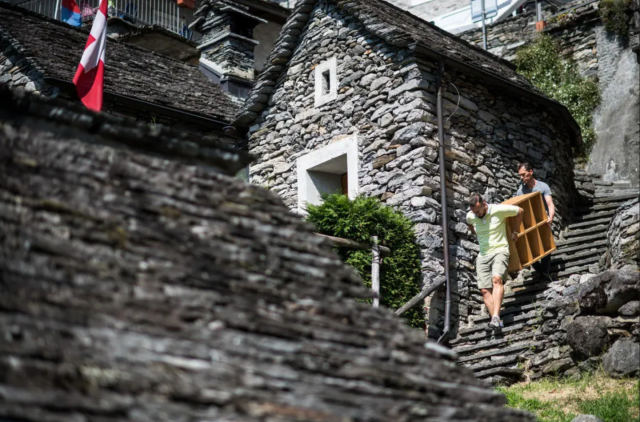Demographic Trends in the Swiss Alps versus Georgian’s Caucasus
Written by Fatima Atchishvili, Runa Conrad & Anina Kläger, a collaboration between students of the Tbilisi State University and the University of Zurich
Many rural areas around the world are facing depopulation problems due to factors like migration, declining birth rates, climate change, unemployment and economic circumstances. Resulting is a population that gets older and older while it grows due to births and migration. Europe has been facing this problem since the 19th century (Kohler et al., 2017). These problems can be summarised into demographic change. This post compares the demographic change in mountain villages in the Swiss Alps with the mountain regions in Georgia, which are part of the Caucasus Mountains.
The demographic aging of a population is significantly impacted by the migration patterns of specific age groups, particularly the movement of individuals in generative age. In many rural areas of the European Alps, the emigration of young people has historically played an important role with variations in timing and intensity across different regions (Bender & Kanitscheider, 2012)
In Switzerland, the last three decades of the 20th century witnessed a trend of depopulation in urbanized regions and a process of counter-urbanization in rural areas, predominantly located in the mountainous zones of Switzerland (Bender & Kanitscheider, 2012). But present, a reversal trend of migration to mountainous regions can be observed. There are people, also younger ones, from the lowland urban areas that are moving to the regions of the Alps to live and work there. Therefore, the population changes back to a more even distribution over the age groups. The migration both ways is mostly due to the idea of better quality of life but as well because of business opportunities (Mayer & Meili, 2016)
In Georgia's mountains, the depopulation process started in the 1980s. Georgia was hit hardest between former Soviet republics and Eastern European countries (Salukvadze & Meladze, 2014). The population decreased from 1989 to 2017 by 39.7%. The economic crisis brought on by political and civil unrest is one of the variables contributing to the population shift in Georgia's mountains. In practically every highland region of Georgia, there is a drop in population, nevertheless, Khevi, Racha, Khevsureti, and Tusheti are especially visible. However, despite the similar environment, Khevi has a more favorable demographic situation than the other areas. The reason for this could be that the Georgian military road goes through here. In Oni municipality, there is a dramatic demographic situation because 37.3% of the population is made up of elderly people (Kohler et al., 2017).
It can be said that the situation in Georgia still is dominated by a depopulation trend in the mountainous regions because young people are moving away for better perspectives. Switzerland on the other hand has a slight reversal trend, where more and more people are moving back to mountainous regions because of better work-live balance. But Switzerland went through phases of high depopulation rates before. In conclusion, we can say that demographic change is an ongoing process in both countries with similarities but also big differences.
Literature:
Bender, O., & Kanitscheider, S. (2012). New Immigration Into the European Alps: Emerging Research Issues. Mountain Research and Development, 32(2), 235–241. https://doi.org/10.1659/MRD-JOURNAL-D-12-00030.1
Kohler, T., Elizbarashvili, N., Meladze, G., Svanadze, D., & Meessen, H. (2017). The Demogeographic Crisis in Racha, Georgia: Depopulation in the Central Caucasus Mountains. Mountain Research and Development, 37(4), 415–424. https://doi.org/10.1659/MRD-JOURNAL-D-17-00064.1
Mayer, H., & Meili, R. (2016). New Highlander Entrepreneurs in the Swiss Alps. Mountain Research and Development, 36(3), 267–275. https://doi.org/10.1659/MRD-JOURNAL-D-16-00040.1
Salukvadze, J., & Meladze, G. (2014). Georgia: Migration, a main risk towards demographic future. Discovering migration between visegrad countries and eastern partners, 150–169.
20 Minuten (2019). Ohne Touristen verschwinden diese Oasen, URL: <https://www.20min.ch/story/ohne-touristen-verschwinden-diese-oasen-193854970725> (Accessed November 2023).
Related Posts
Comments
By accepting you will be accessing a service provided by a third-party external to https://www.mountainapp.net/
This website uses no external trackers, no analytics, just session cookies and values your online privacy.



